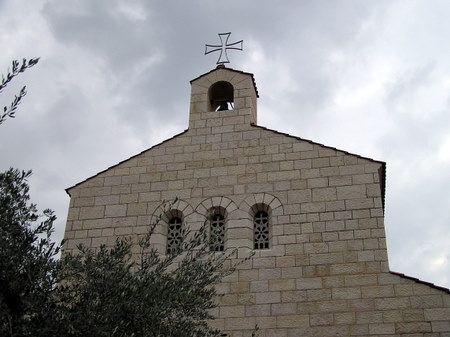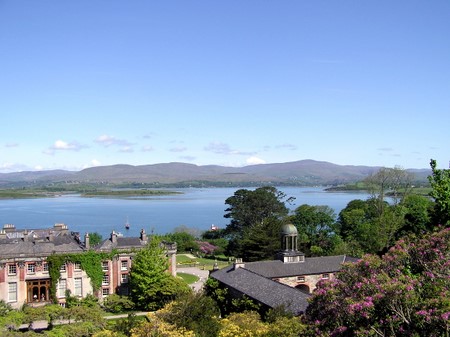Tabgha
Our first stop on Monday January 19, 2009, was the Church of the Heptapegon - Church of Seven Springs in Tabgha.
Inside many mosaics were restored.
The rock at the front is where it is believed Jesus stood as he blessed the fish and the loaves.
Our reading was from Matthew 14: 13-21.
Next we traveled north to Chorazin. It is an excavated ruin today, with most of the work having been completed in the 1960's and the 1980's.
It was an unfortified town with no walls or central plan. The construction used basalt which was a convenient material to acquire. Unfortunately it is a very hard stone which makes it difficult to carve.
The synagogue dates to 135 AD. It is believed Hellenized Jews lived here, in the Roman culture with a more liberal view of things. Below is the reconstructed front gable resting in the outer court of the synagogue.
The Teaching Seat from the synagogue also survived.
Next we travel farther north to Tel Dan.
The seven springs that emerged at Tabgha (today only six have been discovered) produced water warmer than that of the Sea of Galilee. This warmer water helped the production of algae, which in turn attracted the fish. Fishermen thus have frequented this area for thousands of years.The church is the traditional site of the feeding of the 5000. Byzantine church was erected here circa 480 AD. Like most churches, it was destroyed by the Persians in 614 AD. The current structure was restored in the 1980's. It was built on the original walls and foundations discovered in 1932 by two German archaeologists.
Tabgha is the traditional location for the calling of the disciples. It is believed that here Jesus walked along the shore and called out to Simon Peter and Andrew who were casting their nets into the lake. Walking along, Jesus saw two other brothers, James and John who were preparing their nets with their father Zebedee. Jesus called all of these men to follow him.
Inside many mosaics were restored.
The rock at the front is where it is believed Jesus stood as he blessed the fish and the loaves.
Our reading was from Matthew 14: 13-21.
Next we traveled north to Chorazin. It is an excavated ruin today, with most of the work having been completed in the 1960's and the 1980's.
It was an unfortified town with no walls or central plan. The construction used basalt which was a convenient material to acquire. Unfortunately it is a very hard stone which makes it difficult to carve.
The synagogue dates to 135 AD. It is believed Hellenized Jews lived here, in the Roman culture with a more liberal view of things. Below is the reconstructed front gable resting in the outer court of the synagogue.
The Teaching Seat from the synagogue also survived.
Next we travel farther north to Tel Dan.








Comments
Post a Comment